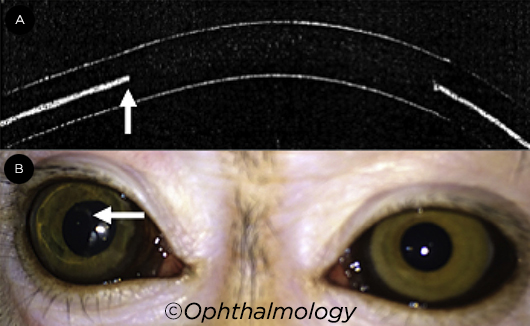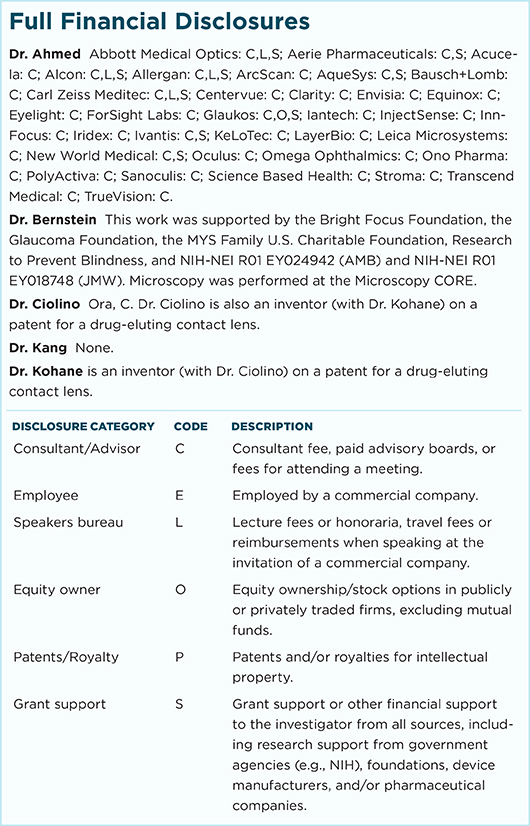Download PDF
A latanoprost-eluting contact lens is showing early promise of being a controlled-release drug delivery system that could help ophthalmologists overcome the problem of their glaucoma patients’ nonadherence to eye drop regimens. The device consists of a translucent latanoprost-polymer film, cut into a ring shape and encapsulated inside a contact lens lathed from methafilcon, a poly-HEMA based hydrogel.
Sustained IOP reductions. In a rare preclinical study published by Ophthalmology,1 researchers reported that cynomolgus monkeys with experimentally induced glaucoma who wore the contact lenses for 7 days at a time showed sustained reductions in intraocular pressure (IOP) throughout the test periods.
Moreover, the researchers found statistically significant evidence that a higher-dose contact lens was more effective than either a low-dose lens or standard topical therapy, said coauthor Joseph B. Ciolino, MD, a cornea subspecialist at Massachusetts Eye and Ear, in Boston. Specific results included the following:
- After 5 days of topical dosing with 0.005% latanoprost solution (50 μL once daily), the maximum IOP reduction from baseline was 6.6 ± 1.3 mm Hg.
- With the low-dose contact lens, the maximum reduction was 7.8 ± 3.8 mm Hg, recorded on day 8 as the lenses were removed.
- With the high-dose lens, the reductions in IOP compared with baseline were 10.5 ± 1.4 mm Hg lower on day 3; 11.1 ± 4.0 mm Hg lower on day 5; and 10.0 ± 2.5 mm Hg lower on day 8.
Apparent dose-response relationship. These findings are in contrast to observations from clinical use of latanoprost. “Our results are surprising because with latanoprost drops, more frequent applications or higher concentrations do not necessarily result in better IOP reduction. Whereas with our study we found what appeared to be a dose-response relationship,” Dr. Ciolino said. “We’ll have to do more studies to determine this, though, because this is a small study in monkeys.”
 |
DRUG-ELUTING LENS. (A) Optical coherence tomography cross-section of lens. Arrow points to the inner edge of the drug-polymer film within the hydrogel. (B) Lens in place in the monkey’s right eye. The clear central aperture is surrounded by a translucent ring of drug-polymer film. Arrow indicates the inner margin of the drug-polymer film.
|
Possible uses beyond glaucoma therapy. According to Daniel S. Kohane, MD, PhD, a Boston Children’s Hospital anesthesiologist and biomaterials researcher who partnered with Dr. Ciolino to invent the drug-eluting contact lens, the device might be adaptable to other ocular medications.
“Although glaucoma is the disease we studied here, this is in fact a platform technology,” Dr. Kohane said. “So it could be used for disease states where the contact lens wear would be much shorter—perhaps steroids for uveitis or postop applications for antibiotics and pain medications.”
—Linda Roach
___________________________
1 Ciolino JB et al. Ophthalmology. 2016;123(10):2085-2092.
___________________________
Relevant financial disclosures—Dr. Ciolino and Dr. Kahane are inventors on a patent for the drug-eluting contact lens.
For full disclosures and disclosure key, see below.

More from this month’s News in Review